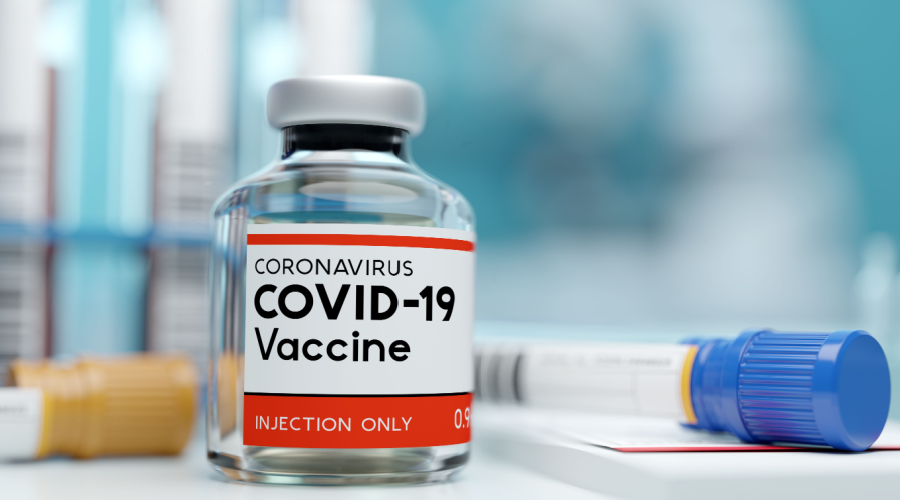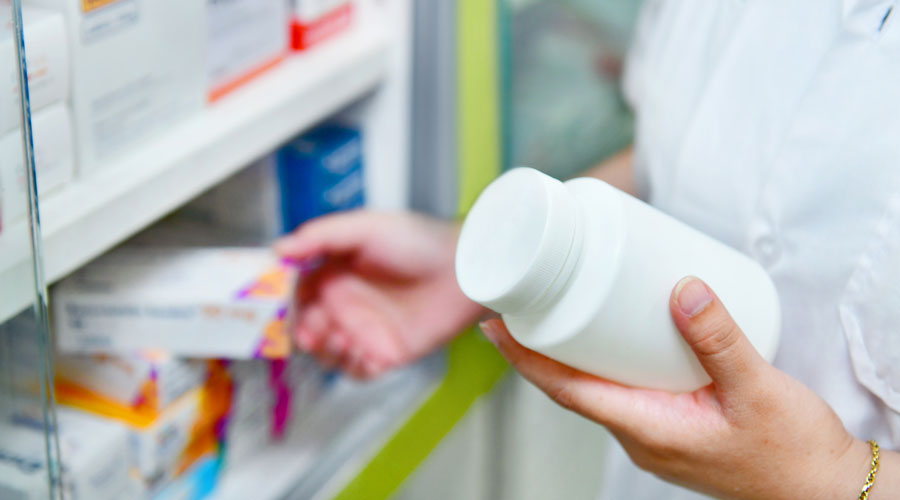When David Falk opened a Sav-Mor Pharmacy in the village of Atwood, Illinois, the local paper cheerfully announced, “Atwood now has its very own pharmacy—complete with a drive-thru window.” Now the 1,100 residents of Atwood could pick up prescriptions close to home instead of driving 10 miles each way to the nearest pharmacy. But there was one notable difference: this Sav-Mor was a telepharmacy.
“We try to bring the latest in technology and the best pharmaceutical care into rural communities, to offer everything that the big-box pharmacies will offer but with a better service level,” Falk said. “We focus on high-touch customer service. That’s how we’ve come to grow and continue to grow.”
Of Sav-Mor’s 14 locations, three are telepharmacies. The remote pharmacies have enabled Falk to expand his business into new areas with rural populations in central and southeast Illinois with the help of modern communication technologies. Pharmacists working at a “home base” Sav-Mor location verify prescriptions remotely via high-definition photos and video. They supervise the telepharmacy location remotely and are available any time a pharmacy technician or patient has questions that only a pharmacist is qualified to answer.
Once the prescription is verified, the experienced pharmacy techs on site enter the prescription into the system, locate the right medication, and count out the pills. The whole process takes about as long as filling a prescription at a traditional pharmacy.
Sav-Mor has been operating telepharmacies since 2015, but the Illinois Board of Pharmacy introduced the practice in 2010 to ease the growing problem of pharmacy deserts.
“They recognized that there was a need for pharmacies, but economically, business-wise, to open a pharmacy in a community with 1,000 population—the numbers aren’t there to make it happen,” said Falk. “So with technology enabling pharmacists to verify prescriptions at a remote location, it took that overhead cost of the pharmacist out of the equation.”
Reducing expansion costs
The 2018 NCPA Digest says non-owner pharmacists in independent pharmacies made an average of $58.10 per hour, or $120,848 per year, in 2017. That’s a lot of overhead to add to the already substantial startup costs like inventory, real estate, equipment, and marketing. “It’s expensive to open a pharmacy,” Falk said. “You’re at several hundred thousand dollars by the time it’s all said and done.”
For pharmacies looking to add a new location, telepharmacy is a more affordable approach. “It gives you the ability to grow your business without the massive amount of overhead that it takes to open a pharmacy,” Falk said. “Overhead is the number one expense in a pharmacy, generally. Removing the cost of the pharmacist at that location, that right there is a hundred-plus thousand in wages a year. So you’ve already made it economically feasible.”
The suggestion to hire fewer pharmacists may sound counterintuitive, and Falk says the introduction of telepharmacy initially created concern for pharmacists’ long-term job prospects. But entering communities that previously had no pharmacist presence doesn’t eliminate a job. Instead, it brings more volume to the pharmacist.
For example, a single host pharmacist in Illinois is allowed to verify prescriptions for up to three different telepharmacies. So if each telepharmacy fills a thousand prescriptions per month, then the host pharmacy has essentially added 3,000 prescriptions to its book of business.
“This gives pharmacy owners the ability to expand into these rural communities and solidify those pharmacists’ positions instead of taking the pharmacists’ position away,” Falk said.
Getting on board
At first, Falk had to convince his pharmacy staff that telepharmacy was a viable route. His solution was to show the pharmacists and pharm techs around the telepharmacy setup and walk them through the process.
“Once they saw it in action and saw the safety and thoroughness and follow-through, they felt a lot more comfortable with it,” he said.
Pharmacists still work closely with telepharmacy patients. Video conferencing allows patients to talk with pharmacists in private consultation rooms about minor conditions like rashes or pink eye. Think of it like Skype or FaceTime, but with a secure connection that protects medical privacy.
“It’s the same as going to the pharmacist and talking to the pharmacist, but you’re just doing it on a television monitor instead of face to face,” Falk said.
For the pharmacy techs put in charge of new locations, telepharmacy has presented a major professional development opportunity. Techs who run telepharmacies are paid more and have more responsibility.
“We have taken our, for lack of a better term, our super techs—the ones that can multitask and have a great personality, don’t have a problem speaking to people, can talk to an insurance company and fill prescriptions at the same time, and overall give that high-touch service that we’re wanting to deliver to the patient,” Falk said. “They kind of take ownership of it because it’s kind of their store. They take a lot of pride in it.”
Patient outcomes
Falk says his telepharmacies are welcomed with open arms in every new community he builds in.
“It’s been quite overwhelming because you look back at some of the communities we’re in, some of them for 10, 15 years they haven’t had a pharmacy,” he said. “And in thousand-populated towns, over half the town is probably taking some kind of maintenance medication, blood pressure, cholesterol, whatever. So they have to travel once a month to go to the nearest pharmacy to get a prescription filled.”
In the short term, having a telepharmacy close to home saves residents of towns like Atwood, Cerro Gordo, and Louisville, Illinois, valuable time and energy. But the long-term effects are even more important. The close proximity helps increase adherence by reducing the obstacles between patients and their prescriptions. Inclement weather, car troubles, and busy schedules are now less likely to prevent or delay pickup. Better adherence can in turn reduce healthcare costs.
“You don’t take your insulin, you don’t take your blood pressure medicine, you’re going to end up in the hospital. For a rural community that doesn’t have a hospital, that means transportation and hospital costs that are much more expensive than prescriptions,” Falk said.
Sav-Mor’s telepharmacies also administer vaccinations. Though they can’t offer the same walk-in service as the home pharmacies, they provide immunizations by appointment and during scheduled immunization clinics. Just as proximity helps patients with medication adherence, it can increase the likelihood of immunizations, especially among more vulnerable populations who have difficulty traveling to the next town over.
On the horizon
Falk is preparing to open his fifteenth location, in Pana, Illinois. He says feedback from the community indicates it could likely support a full pharmacy in the future, but he’s opening the location as a telepharmacy first to make sure it’s financially viable.
For pharmacists interested in following his model, Falk’s advice is to start by checking the regulations in your state. Twenty-three states allow some form of telepharmacy, but the restrictions and guidelines vary widely. But in some states, especially those with expansive rural areas, harnessing technology can help you meet a real need that still makes business sense.
“In the more rural states, it’s a great way to expand your pharmacy without the overhead of opening a full-on pharmacy and absorbing those costs until the volume gets there,” Falk said. “There are a lot of desert areas that don’t have pharmacy care that need pharmacy care. This is a great way to use technologyto provide healthcare services.”
From the Magazine
This article was published in our quarterly print magazine, which covers relevant topics in greater depth featuring leading experts in the industry. Subscribe to receive the quarterly print issue in your mailbox. All registered independent pharmacies in the U.S. are eligible to receive a free subscription.
Read more articles from the March issue:
- How to make immunizations a pharmacy profit center
- How CPESN networks break pharmacies into the lucrative side of healthcare
- Is pharmacist prescribing authority on the rise?
- A classic retail tactic that boosts front-end sales
- A new weight loss program that helps patients lose pounds
- How to hire the best people for your pharmacy
A Member-Owned Company Serving Independent Pharmacies
PBA Health is dedicated to helping independent pharmacies reach their full potential on the buy-side of their business. Founded and owned by pharmacists, PBA Health serves independent pharmacies with group purchasing services, wholesaler contract negotiations, proprietary purchasing tools, and more.
An HDA member, PBA Health operates its own NABP-accredited secondary wholesaler with more than 6,000 SKUs, including brands, generics, narcotics CII-CV, cold-storage products, and over-the-counter (OTC) products — offering the lowest prices in the secondary market.











